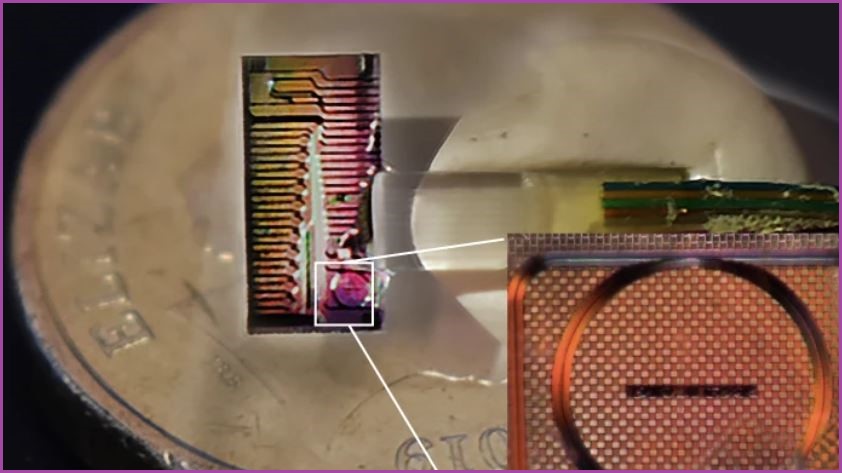Australian researchers have built an ‘optical micro-comb' chip capable of transferring data at a world record 40Tbps over 75km of standard fibre optic cable.
The research – published last week in Nature Communications – demonstrates the potential of the new chip to transform existing telecommunications infrastructure to enable ultra high-speed connectivity.
Monash University Lecturer, Bill Corcoran, co-authored the research and offered a simpler description of how the optical micro-comb technology converts the many wavelengths of light incorporated in fibre optic data transmission.
“Optical micro-combs are tiny gadgets that in essence use a single laser, a temperature-controlled chip, and a tiny ring called an optical resonator to send out signals using many different wavelengths of light,” Corcoran wrote in The Conversation.
“The key to micro-combs are optical resonator structures, tiny rings that when hit with enough light convert the incoming single wavelength into a precise rainbow of wavelengths.”
The ability for these devices to quickly and precisely convert data into multiple wavelengths (colours) could power-up fibre optic cables far beyond their existing capability.
Director of Swinburne University’s Optical Sciences Centre, Professor David Moss, said he has enjoyed seeing the expanding potential of micro-comb chips in the decade since he helped invent them.
“It is truly exciting to see their capability in ultra-high bandwidth fibre optic telecommunications coming to fruition,” Professor Moss said.
“This work represents a world-record for bandwidth down a single optical fibre from a single chip source and represents an enormous breakthrough for part of the network which does the heaviest lifting.
“Micro-combs offer enormous promise for us to meet the world’s insatiable demand for bandwidth.”
To prove their “soliton crystal micro-comb" device works outside lab conditions, the researchers tested it on an existing fibre loop between Monash University’s Claymore campus and RMIT in Melbourne and were able to achieve the record transfer speed of 40Tbps.
For comparison, NBN Co recently announced that it achieved a new record peak transfer rate of 13.9Tbps across the entire network in late April.
Though still reliant on copper networks to get data into homes, the NBN uses fibre optic cables to whip data around the country.
Utilising existing technology also used by Australia's NBN, researchers just recorded the world's fastest internet speed using a single optical chip. https://t.co/umYaTp6fZd pic.twitter.com/uHo7hq6oEC
— RMIT University (@RMIT) May 25, 2020
More research and development is needed to incorporate both electrical modulators and optical micro-combs on a single chip, but co-author of the study, RMIT’s Professor Aran Mitchell, is optimistic the groundwork has already been laid for a future of ultra high-speed internet in Australia.
“Longt-term, we hope to create integrated photonic chips that could enable this sort of data rate to be achieved across existing optical fibre links with minimal cost,” Professor Mitchell said.
“Initially, these would be attractive for ultra-high speed communications between data centres.
“However, we could imagine this technology becoming sufficiently low cost and compact that it could be deployed for commercial use by the general public in cities across the world.”










